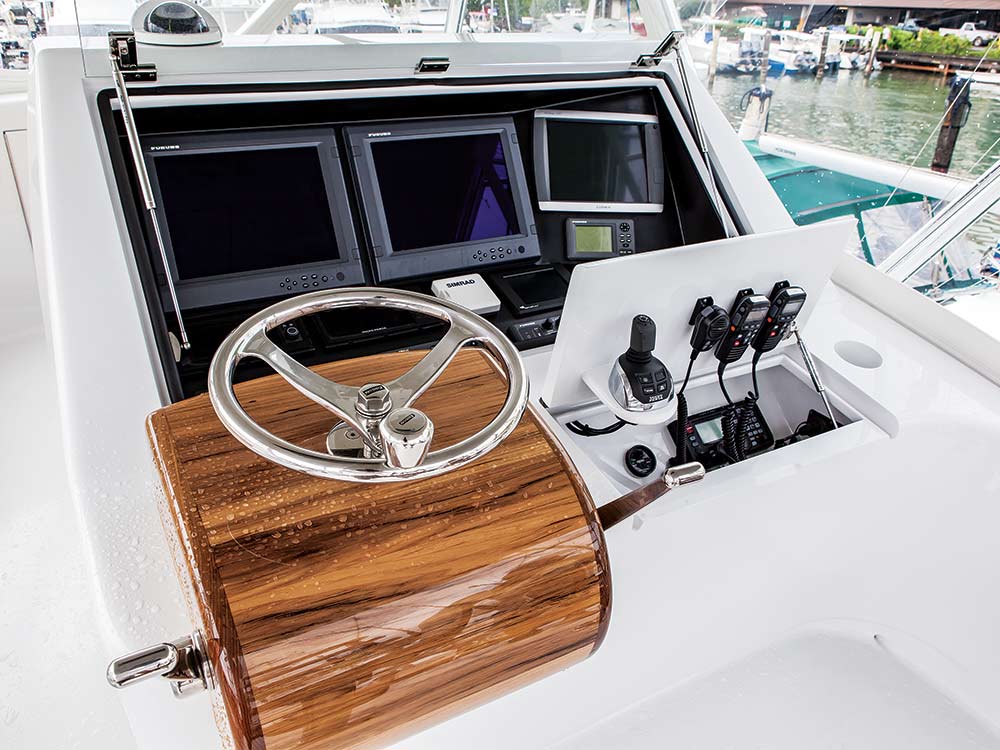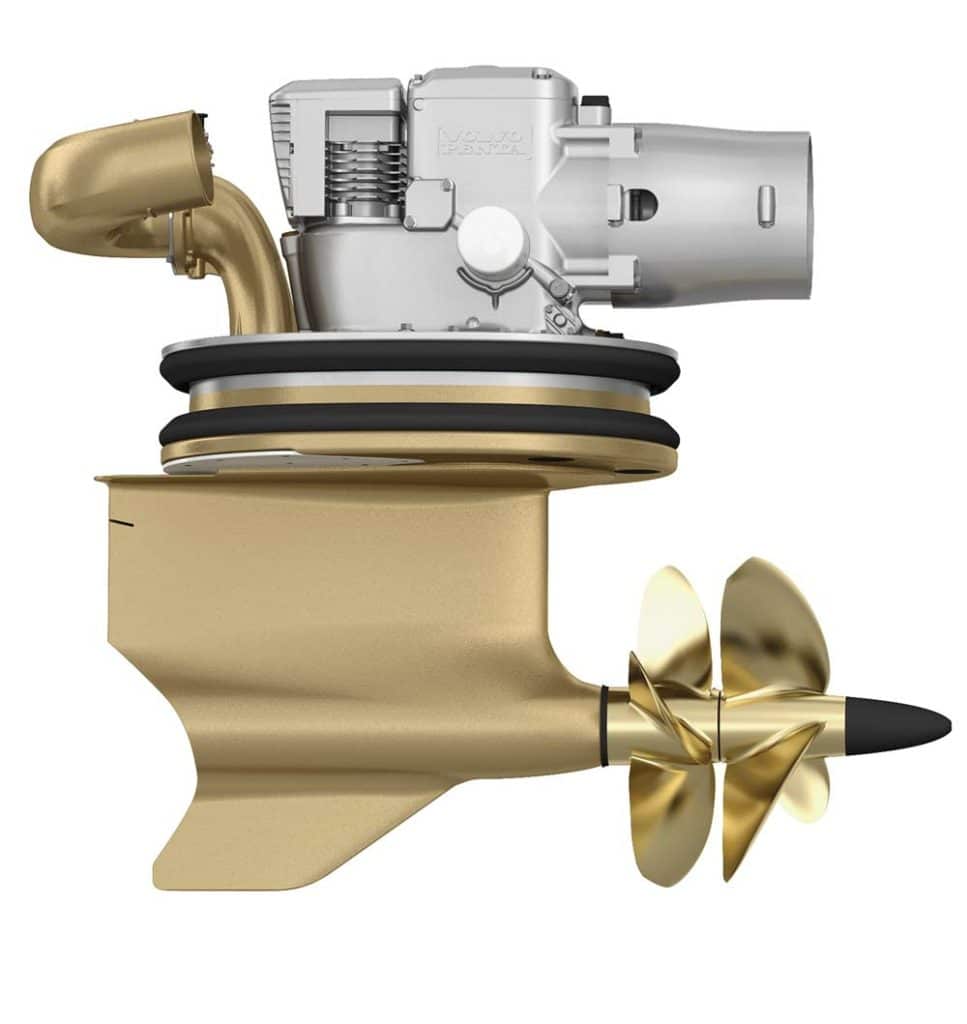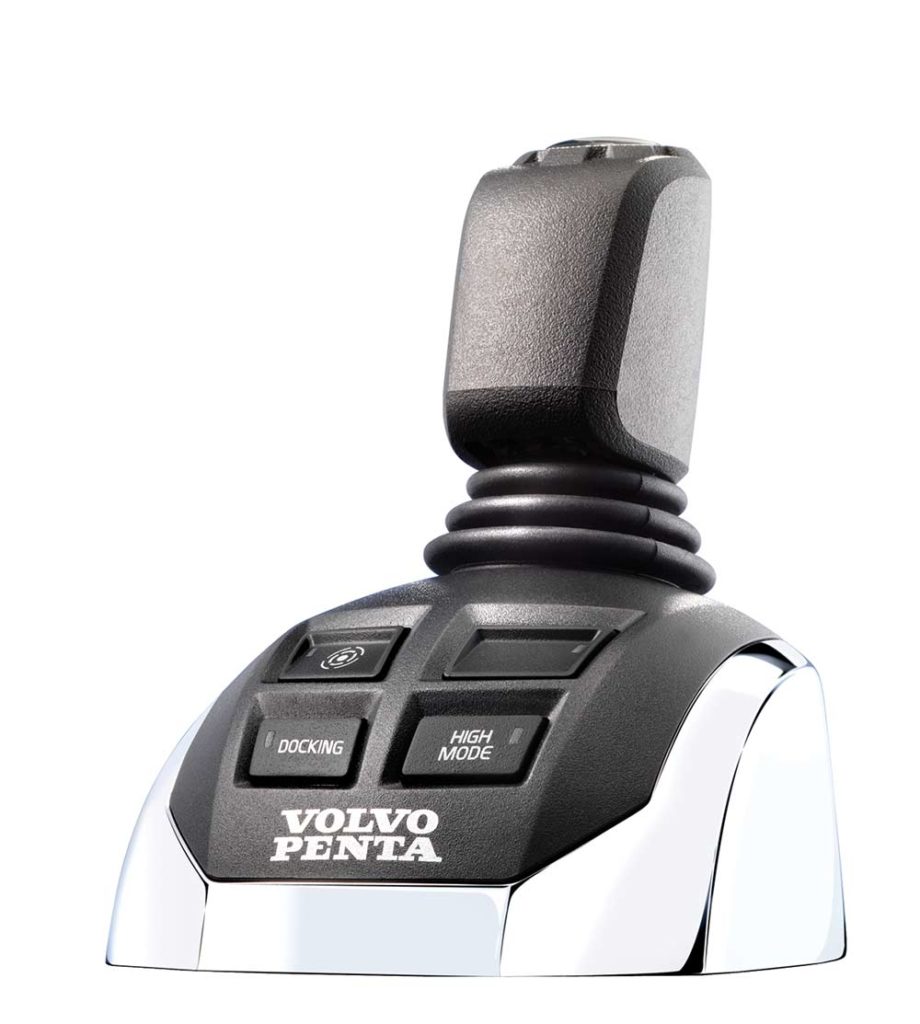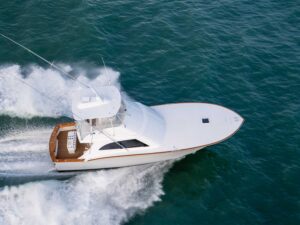
The first boatbuilders installing pod-drives in the early to mid-2000s weren’t putting them on sport-fish boats. The first American company to install the Volvo Penta Inboard Performance System was actually Tiara. I had the opportunity to run several different boats at Volvo’s test center in Gothenburg, Sweden, during the company’s international press launch, and there is no doubt I was intrigued by the system.
Pod-drives are not a new concept.
Pod Drives: Fad or the Future?
I had seen massive tugboats using a similar pod-drive system for their tight-quarters work, pushing huge container ships into the wharf. But this was a first for the recreational segment of the marine industry, and there was a lot of buzz and excitement. The biggest thing marketed to promote the system was its efficiency compared to a regular shaft and prop system, as well as joystick maneuverability. Pods operate independently of one another to provide vectored thrust in any direction, which makes the vessel incredibly maneuverable.
After the tests in Sweden, I then did a leg of the trip on that first Tiara Volvo demo boat, heading west in the New York State Canal from the Hudson River to the Great Lakes. At that time, the company boat was a 38-foot express cruiser with a pair of Volvo D6 370 hp diesels matched to IPS 500 series drives.
The New York State Canal is just one of the many great scenic boat trips North America has to offer, and the numerous locks create a lot of tight-quarters maneuvering. The pod-drives gave us the ability to manage the narrow locks and small marinas along that route without a bow thruster.

Magic on Marlin
Eager to fish with them, I was along with Ed Szilagyi, then Volvo’s boatbuilder installation liaison and company captain, on that same Tiara demo. The boat had a set of outriggers, and fishing out of Beaufort, North Carolina, we caught the first billfish ever with an IPS drive system. We raised several white marlin, and caught a couple for our junior anglers that were fishing with us for the day. Prior to heading out with the boat, there was a lot of talk on the dock about whether the new drives would raise fish or scare them away.
Our white marlin came in hot on the teasers we fished up close to the boat. As we have seen many times with sailfish, I am certain one of the marlin swam along with us between the teaser and the boat, looking at the wheels and not at the bait we had moved into position to switch him over to. After that, it wasn’t up for discussion any longer: The marlin didn’t mind the pods at all. Obviously, you have run over fish to get a bite, but we proved that pod-drives were no fearsome thing.

Within a year or two, Paul Spencer built a 43-foot express with IPS drives that we fished in a tournament. That boat was an agile-handling rig for sure. However, I think the best application I have run to date was a 39-foot SeaVee with pod-drives. The 390 with Volvo 600 IPS drives was absolutely one of the most fun and outrageous-performing boats I have ever driven.
I had SeaVee owner Ariel Pared with me when we pulled away from the dock sideways, crabbing away briskly from our side-to moor. Once offshore, I spun the boat in a complete 360-degree rotation on its own axis in less than 14 seconds.
We backed around and spun both ways with speed I have only seen once or twice before. I simulated backing through a slalom course in reverse, moving faster than any angler could ever gain line. The boat never missed a beat, much to Pared’s elation. SeaVee no longer builds inboard boats, but that was a neat one.
New Players Enter the Arena
Along with Volvo, who now makes the IPS drives from 260 to 1,000 hp, Cummins and MerCruiser partnered to join the fray with their Zeus pod-drive system, complete with SmartCraft monitoring and system management that integrates the vessel’s electronics, propulsion and onboard systems. The Zeus system propellers are on the back of the pods, as opposed to the Volvo IPS, which are on the front. Caterpillar also offers a pod configuration with its CAT Three60 Pod 650, which is essentially a pod-drive married to a C8.7 engine.
Although there are claims of 30 percent efficiency gains in cruise and top-end speed as well as fuel savings, the results vary from boat to boat when compared to straight shaft and prop configurations. The sport-fishing world has seen builders such as Spencer and Winter Custom Yachts introduce several pod boats.
While there has not been a flood of acceptance in the sport-fishing market for pod-drives, the cruising market has seen a larger number of owners making the transition away from conventional shaft-and-wheel boats. There are many factors that go into all of this, not the least of which are service and technical expertise to repair the systems, parts availability and costs for purchase and maintenance. Like most everything, making the decision to go conventional or pod is a personal choice.







